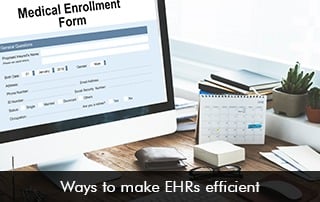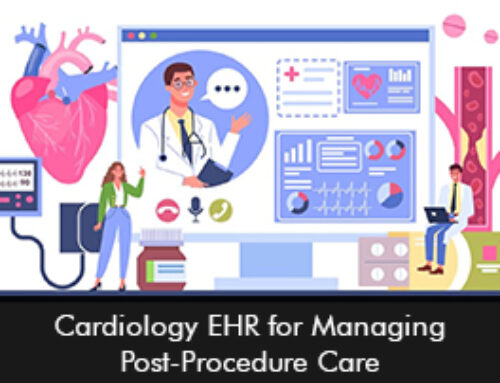Electronic Health Records software has contributed to healthcare by automating tedious tasks and improving patient care. However, clinicians are upset about the time they spend on the EMR system. Primary care physicians and specialists feel that it adds to physician burnout, which can reduce productivity and demotivate caregivers.
What is EMR Software optimization?
The process of enhancing and improving the efficiency, functionality, and usability of Electronic Medical Records (EMR) software systems is referred to as software optimization. It entails various tactics and techniques to increase the software’s efficiency and effectiveness to better support healthcare providers and improve patient care.
The benefits of optimizing EHR Software solution
- Optimized EMR systems can boost efficiency levels as physicians spend less time on documentation and data entry.
- Patient care is enhanced, as healthcare providers can seamlessly access up-to-date patient information via the optimized software.
- Cost savings can be realized by healthcare organizations. By improving EHR technology there is a reduction in documentation errors which can result in cost savings as unnecessary tests and procedures are reduced.
- Optimization also enhances data quality.
- When electronic health records software is optimized they also improve interoperability. This enhances data exchange between systems and promotes care coordination.
- Greatly improve user satisfaction. As clinicians can now easily navigate, and streamline workflows.
Strategies to make EMR software more efficient
Reduce information overload which can stress providers
Reducing information overload in physician notes can improve the EHR software solution. EMR note design can be enhanced by using colored and bold text. This can help to highlight any abnormal information easily.
Using new EMR note designs in commercial software can boost EMR software usability without the need for the physician to learn new software tools.
User Interface and Usability Enhancement
The user interface of electronic medical records software is extremely important in terms of user satisfaction and efficiency. The process of optimizing a user interface can make it more intuitive, user-friendly, and easy to navigate. Menus may be redesigned, shortcuts can be added, and data-entering processes can be simplified.
Template and Documentation Optimization
EHR system templates and documentation tools can be adjusted to streamline data entry, eliminate human input, and improve accuracy. Providers can save time and expedite the documentation process by creating customized templates, predefined order sets, and automated documentation tools.
Moving ahead
The optimization method entails examining existing procedures within electronic health records software to find bottlenecks, redundancies, and inefficiencies. Workflows can be changed and streamlined based on this study to reduce clicks, eliminate superfluous stages, and enhance overall efficiency.
Once software systems are efficient, healthcare providers can have more time to focus on patient care and improve their overall work-life balance. Clinical efficiency can also increase and reduce the occurrence of provider frustration when navigating the health IT solution.







